By Robert L. Reid
The city of Wilmington, Delaware, having won rave reviews for redeveloping the west side of the Christina River in the 1990s, is now working on a sequel of sorts: a $100 million redevelopment of the river’s east bank.
Called Riverfront East, the project encompasses 86 acres of mixed-use development south of the downtown area on what had been largely a former industrial site. The site was previously home to tanneries, shipbuilding and salvage yard operations, oil and gas businesses, and other such facilities, explains Megan McGlinchey, the executive director of the Riverfront Development Corporation of Delaware.
The RDC is the state-funded nonprofit organization that spearheaded the river’s west side redevelopment and is leading the east side project as well. RK&K, headquartered in Baltimore, is the engineer of record for the Riverfront East project and is responsible for the topographical surveys, civil engineering, traffic engineering, project management, and geotechnical engineering. Hillis-Carnes, of Annapolis Junction, Maryland, conducted drilling and lab testing support. David Rubin Land Collective, of Philadelphia, is the project’s landscape architect.
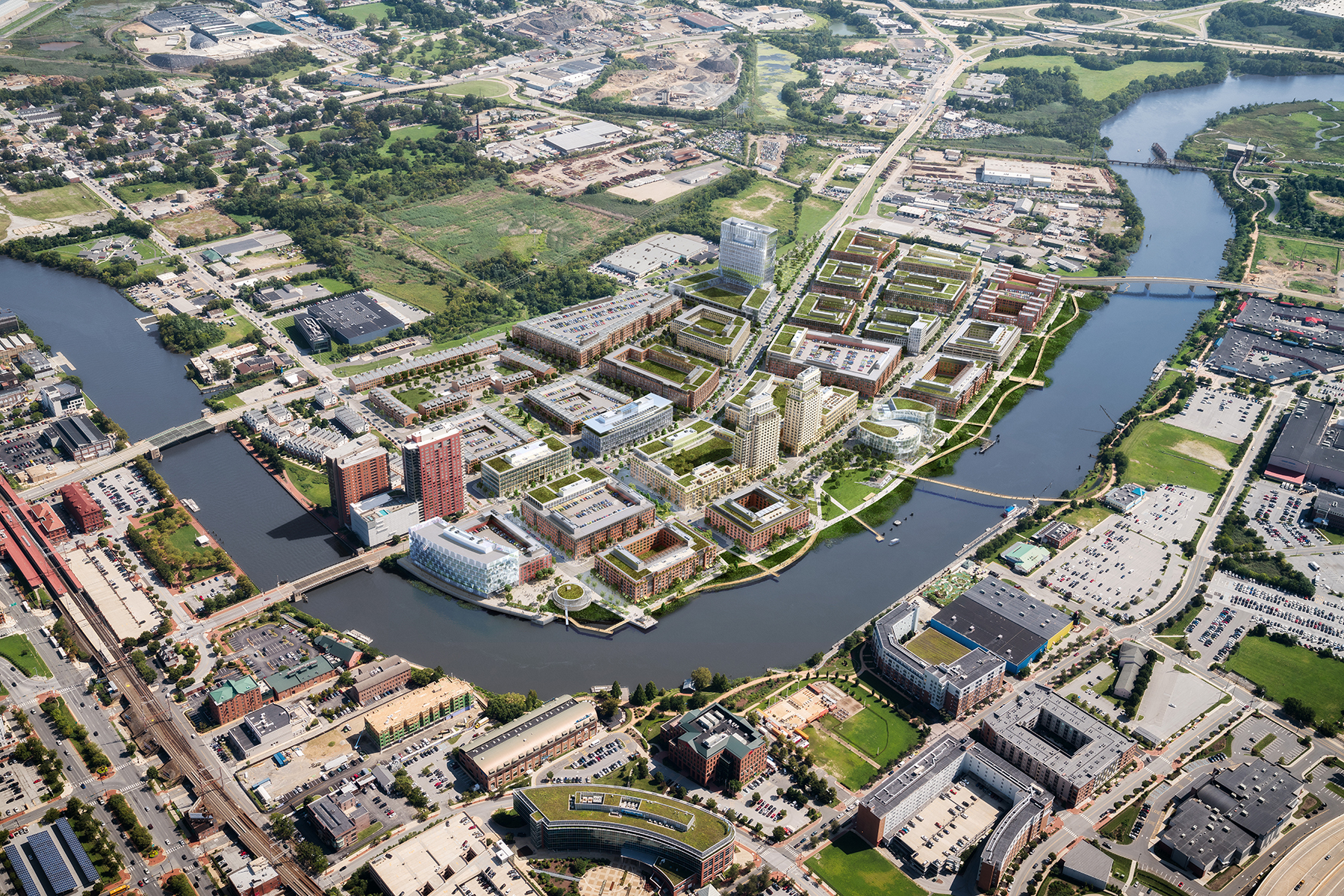
Adding amenities
RK&K and David Rubin Land Collective, along with Robert A.M. Stern Architects, of New York City, worked on the master plan for the redevelopment, which envisions more than 13 acres of open, public areas, including parks, greenways, and a 3,700 ft long riverwalk along the Christina featuring boardwalks, piers, and promenades; 1.9 million sq ft of office space; 4.7 million sq ft of residential units; 357,000 sq ft of retail space; and nearly 9,000 parking spaces in structures as well as more than 640 on-street parking spaces.
A new pedestrian bridge is also planned, spanning the Christina River from the Central Green — a 2.3-acre park in the Riverfront East development — to parts of the Riverfront West development.
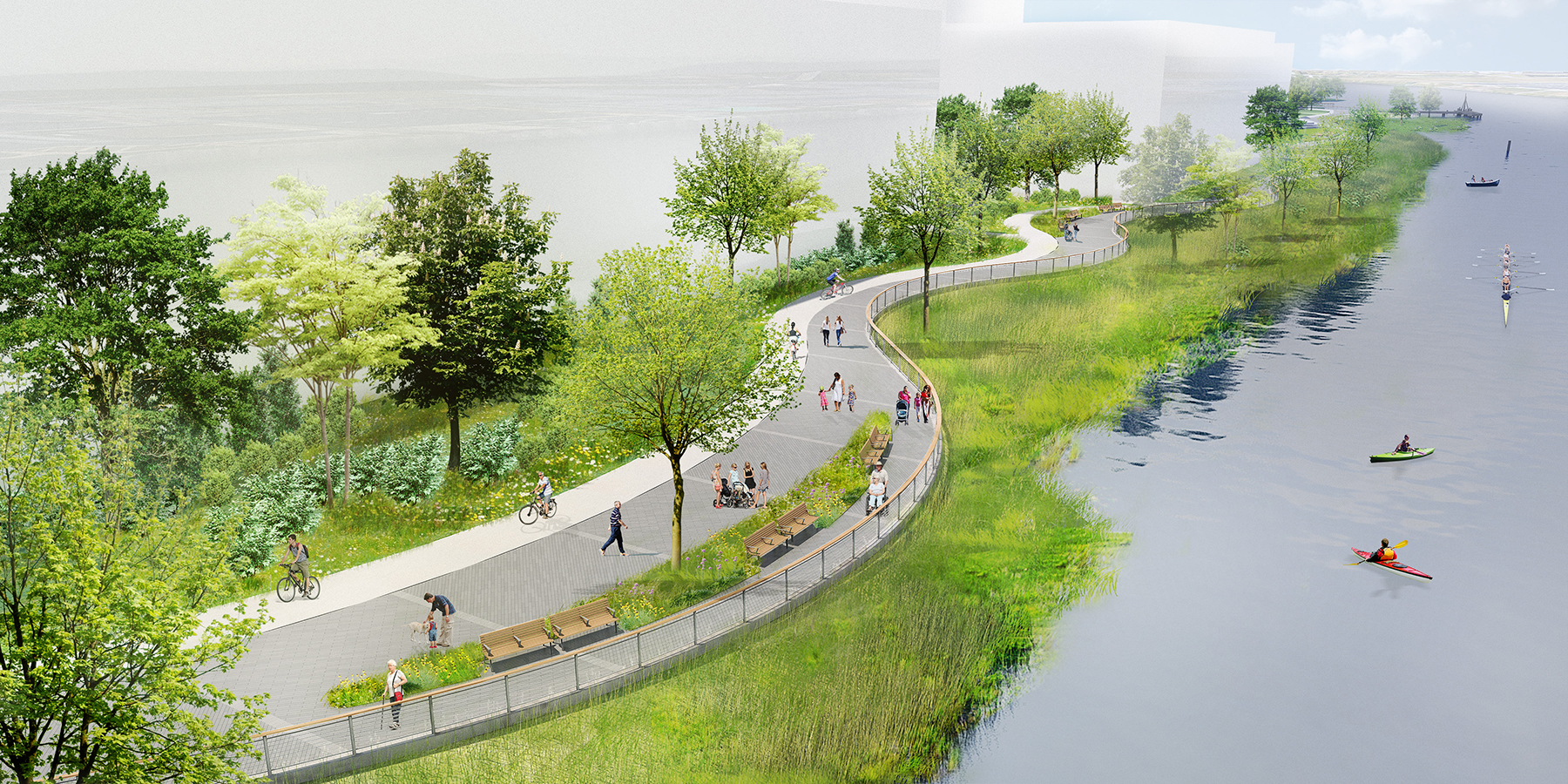
The Riverfront East project is being divided into three phases, the first of which is expected to break ground this summer. But first, a Salvation Army complex must be relocated from a site within the redevelopment area to a new campus just outside the footprint of the redevelopment, notes McGlinchey. The existing structures at the former Salvation Army facility will then be demolished, along with other structures currently within the project area, so that soil remediation and elevation issues can be addressed.
New water, sewer, and other utilities are also planned — in part because the existing utilities were getting old but also because of the need for more robust systems to accommodate the expected increase in demand from new businesses and residents, McGlinchey explains.
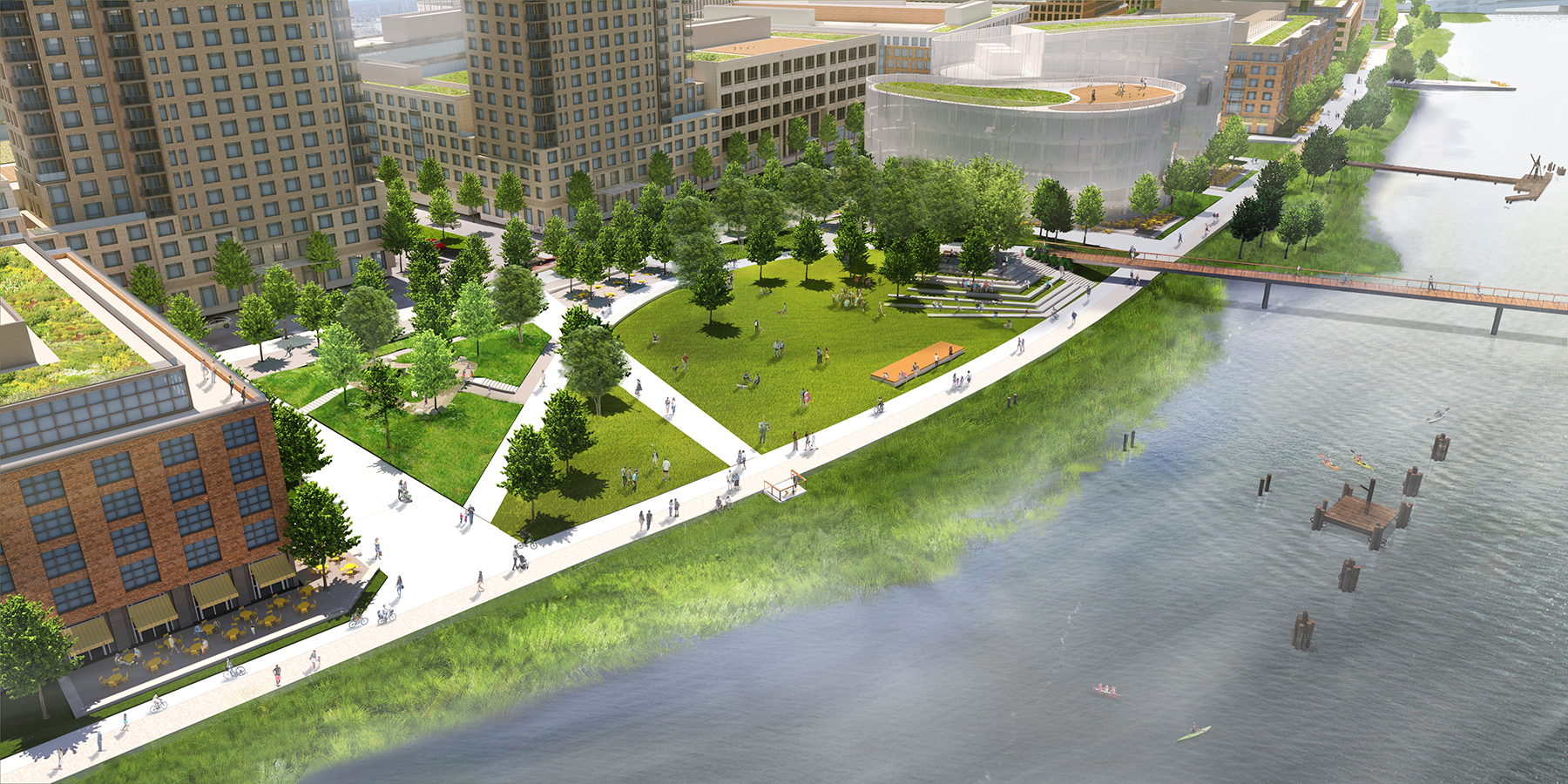
A major utility corridor for the city, the Delaware Department of Transportation, and several private utilities that currently runs directly beneath the project site will be relocated, adds Robert Shaffer, the design manager at RK&K. In addition, a 12 kV power line for Delmarva Power, the local electrical utility, that runs under the river and through the Riverfront East site will be rerouted.
The project’s first phase is expected to be completed by mid-2024. The completion dates for the subsequent phases are being determined.
Confronting COVID
RK&K’s initial work involved a topographical survey of the existing site, which was performed by aircraft operated by Axis Geospatial, of Easton, Maryland. The aerial survey was supplemented by field and drone surveys, performed by RK&K, as well as existing data on the tidal conditions along the river, says Shaffer. Wilmington-based VanDemark & Lynch Inc. is performing property surveys and preparing right-of-way and subdivision plans.
South Market Street, a major thoroughfare leading out of downtown Wilmington, crosses through the site. RK&K helped redesign South Market Street about a decade ago, raising its elevation and installing a new stormwater control system, notes Shaffer. The firm also helped design a new street grid for the Riverfront East project, incorporating South Market Street into the new grid and adding dedicated bicycle lanes and on-street parking along the various routes.
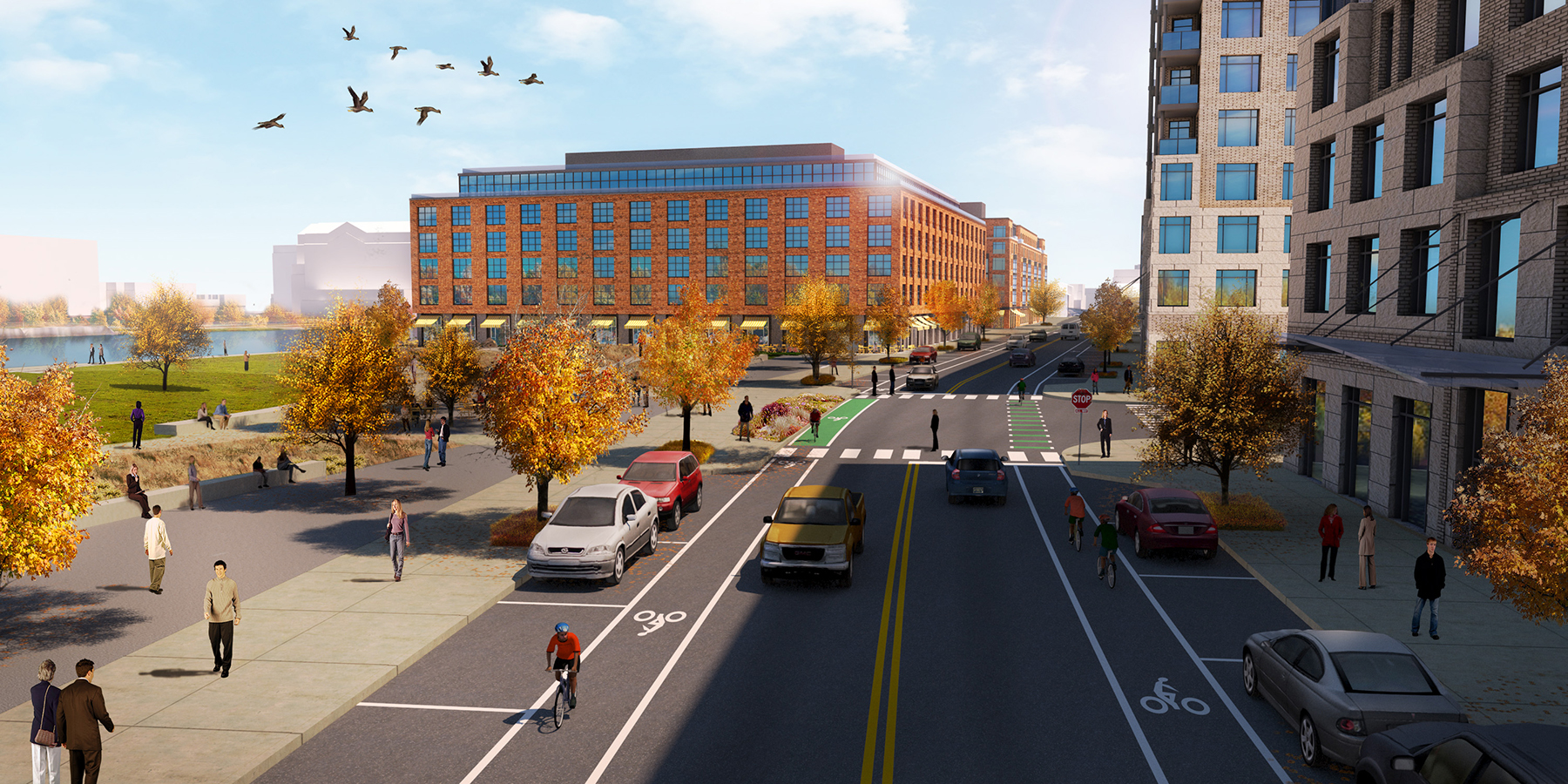
Just as RK&K started analyzing traffic on South Market and other streets within the site, the COVID-19 pandemic struck, greatly reducing the number of cars on the road. “It was a real challenge to get a good handle on the existing traffic conditions,” Shaffer says.
Fortunately, because RK&K had been working on traffic projects in Wilmington for decades, the team was able to use historical data to model the proposed conditions expected on Riverfront East’s new street grid, including potential traffic patterns as the development increases over time, notes Pat Martino, P.E., M.ASCE, the firm’s director of transportation.
Working together
The project will also install new retaining walls and bulkheads along the river’s edge to allow visitors to get as close as possible to the river while staying above the high-tide line, says Shaffer.
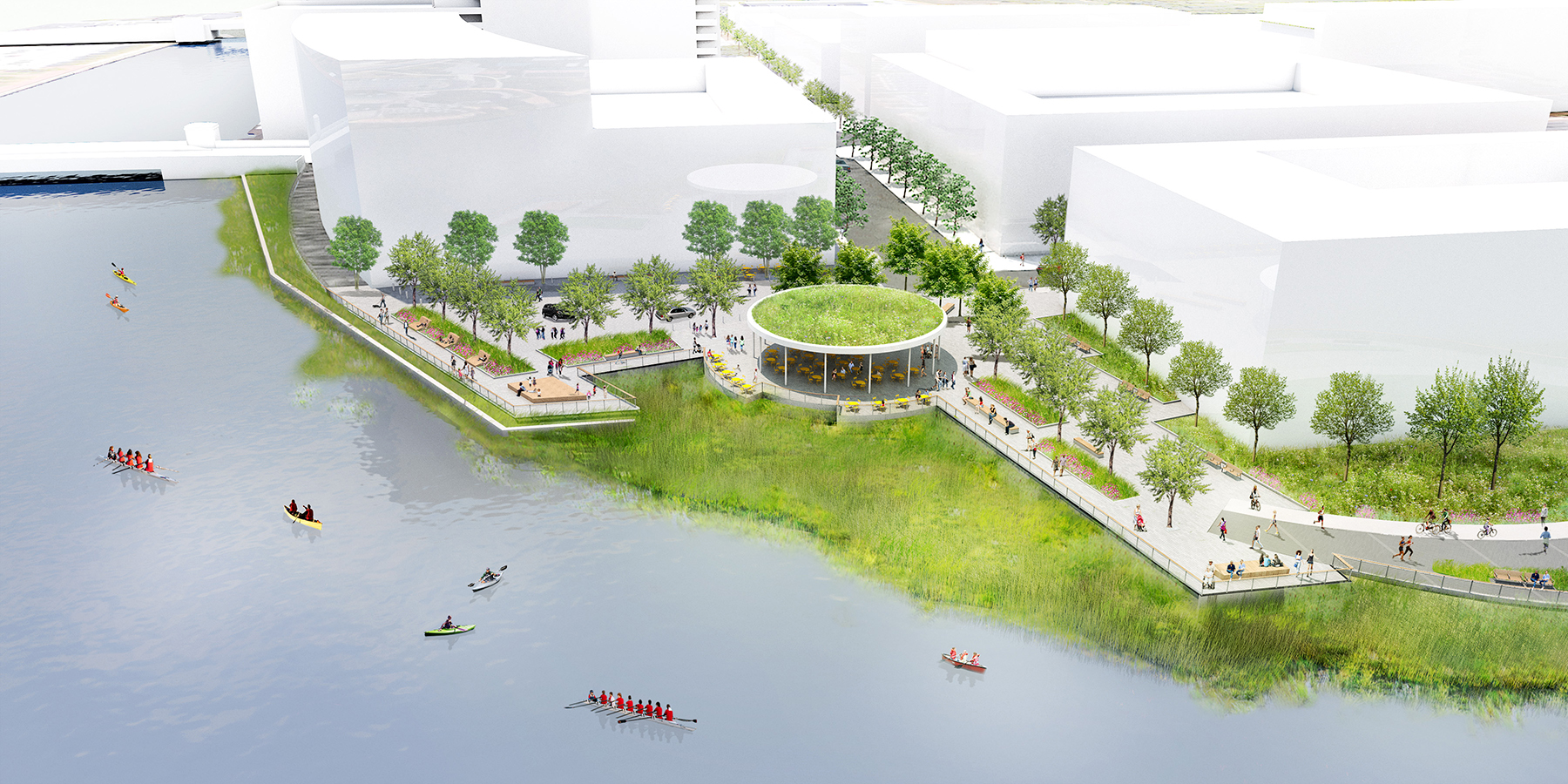
The riverwalk area will include a dedicated bicycle lane along with the pedestrian paths, vegetated areas, and benches, notes Martino. There will also be a line of sloping green spaces between the inner edge of the riverwalk and the surrounding developed areas that will be designed to capture stormwater so that the runoff is not simply “dumped directly into the river,” says Martino.
Some existing outfalls along the riverfront stormwater system will be replaced with new outfalls at higher elevations.
Preparing the site
Because of its industrial background, the site’s soil could be potentially contaminated. Soil might have to be removed in places or capped by as much as 3 ft of clean material, notes Kathy Stiller, a senior program manager at BrightFields Inc., the Wilmington-based environmental and remediation consulting firm that is working on the project with the RDC.
In addition, in some locations the construction of new buildings and infrastructure is expected to cause settlement of as much as 8 to 10 in. Thus, the project will first surcharge a portion of the site with at least 18 in. of material to accelerate that settlement and help construction commence, says Shaffer.
The site will also be surcharged with new soil to raise the elevation above the potential flood level — a challenging aspect of the project, given that there is as much as a 5 ft swing in the water level along the tidally influenced riverfront, explains Shaffer.
Obtaining all necessary permits and approvals is a major part of RK&K’s efforts, Shaffer adds. The project leaders must work closely not only with the city but also with DelDOT, the Delaware Department of Natural Resources and Environmental Control, the Delaware Transit Corp., the U.S. Army Corps of Engineers, the Federal Highway Administration, and other stakeholders.
These collaborative efforts and the defined objectives for Riverfront East development earned the project recognition and support in the form of a RAISE (Rebuilding American Infrastructure with Sustainability and Equity) discretionary grant, awarded by the U.S. Department of Transportation.



